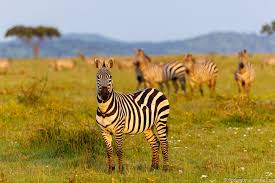A Texas photo safari offers a thrilling opportunity to capture the state’s incredible wildlife, sweeping landscapes, and dramatic skies. Whether you’re venturing into the vast plains, the dense Hill Country, or the coastal wetlands, Texas provides a diverse range of photographic subjects. Preparing for your journey is key to making the most of your adventure while ensuring you stay safe and comfortable.
Choosing the Right Location
Texas is massive, and its wildlife varies depending on the region you visit. The Rio Grande Valley is famous for exotic birds, while Big Bend National Park offers rugged desert scenery and roaming black bears. If you’re hoping to photograph bison and prairie dogs, Caprock Canyons State Park is a great choice. For alligators and wetland birds, Brazos Bend State Park near Houston is a must-visit. Researching your destination for Texas photo safaris will help you know what to expect and what kind of equipment you should bring.
Packing the Right Camera Gear
A good camera setup is essential for a successful photo safari. A DSLR or mirrorless camera with a versatile zoom lens will allow you to capture both distant wildlife and sweeping landscapes. If you want to get shots without disturbing animals, a telephoto lens comes in handy. A wide-angle lens can highlight Texas’ dramatic skies and unique geological formations. Tripods can be useful especially if you’re shooting at sunrise or sunset. Extra batteries and memory cards are a must, as you may be far from power sources for long periods.
Dressing for the Texas Climate
The Texas climate can be unpredictable, so dressing in layers is a smart approach. Lightweight, moisture-wicking clothing is ideal for warm days, while a light jacket will come in handy for cooler mornings and evenings. If you’re visiting desert areas, be prepared for extreme temperature shifts between day and night. A wide-brimmed hat, sunglasses, and sunscreen will protect you from the strong Texas sun, while waterproof boots or sturdy hiking shoes will help you navigate rough terrain.
Understanding Wildlife Behavior
Wildlife photography requires patience and an understanding of animal behavior. Many animals are most active in the early morning and late evening, so plan your outings accordingly. Approaching animals too closely can stress them and result in missed photo opportunities. Instead, use your zoom lens to capture detailed shots from a safe distance. Some areas, especially near water sources, attract a high concentration of wildlife, making them great spots to set up and wait for action.
Staying Safe in the Outdoors
While photographing Texas’ wild beauty, safety should always be a priority. Some regions have venomous snakes, so watching where you step is crucial. In areas with large predators like mountain lions or black bears, it’s important to be aware of your surroundings and follow any posted guidelines. If you’re heading into remote locations, carrying a map, plenty of water, and a basic first-aid kit is a good idea. Cell service may be unreliable in some parts of Texas, so having a backup plan, such as a GPS device or a satellite messenger, can provide extra security.
Making the Most of Texas’ Natural Light
Lighting plays a significant role in photography, and Texas offers some of the most spectacular natural lighting conditions. The golden hour—shortly after sunrise and before sunset—casts a warm glow over the landscape and enhances wildlife shots. Midday light can be harsh, especially in the open plains, so using natural shade or adjusting camera settings can help balance exposure. If you’re lucky enough to be in Texas during a storm, the dramatic cloud formations can create incredible photographic opportunities.
Respecting the Environment
Preserving Texas’ natural beauty is just as important as capturing it. Staying on designated trails, following and respecting park rules helps protect fragile ecosystems. Avoid disturbing wildlife, and never feed animals, as this can alter their natural behavior. If you’re using flash photography, be mindful of its impact on nocturnal creatures. Packing out all trash and minimizing your footprint ensures that future visitors can enjoy the same breathtaking scenery.
While capturing great shots is a major goal, taking the time to enjoy the experience itself is just as rewarding. Texas’ landscapes have a way of making you feel small in the best possible way. Watching a herd of deer graze at dawn or seeing a hawk soar against a deep blue sky is an unforgettable experience, even without a camera. Sometimes, the best moments happen when you put the camera down and simply take it all in.
